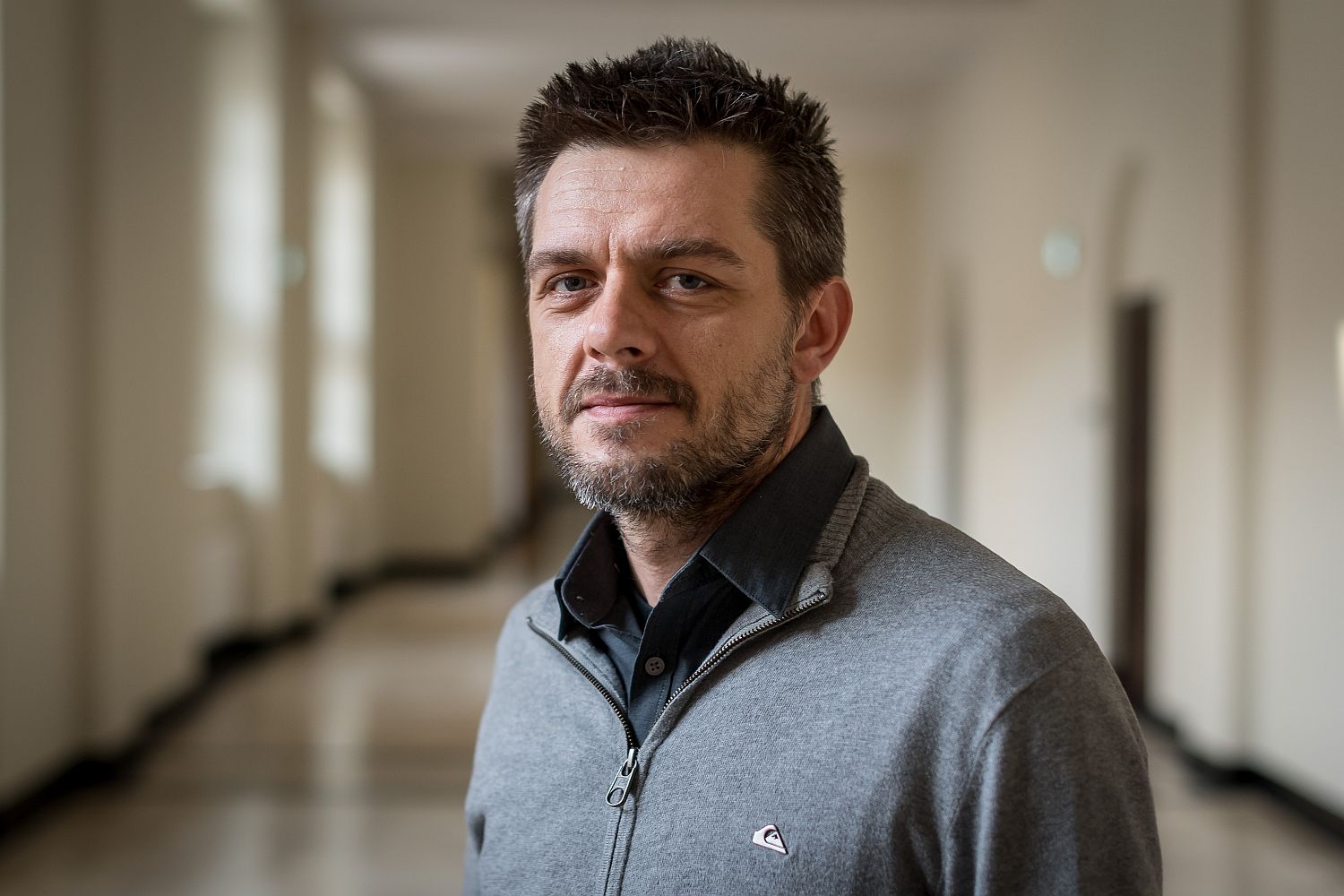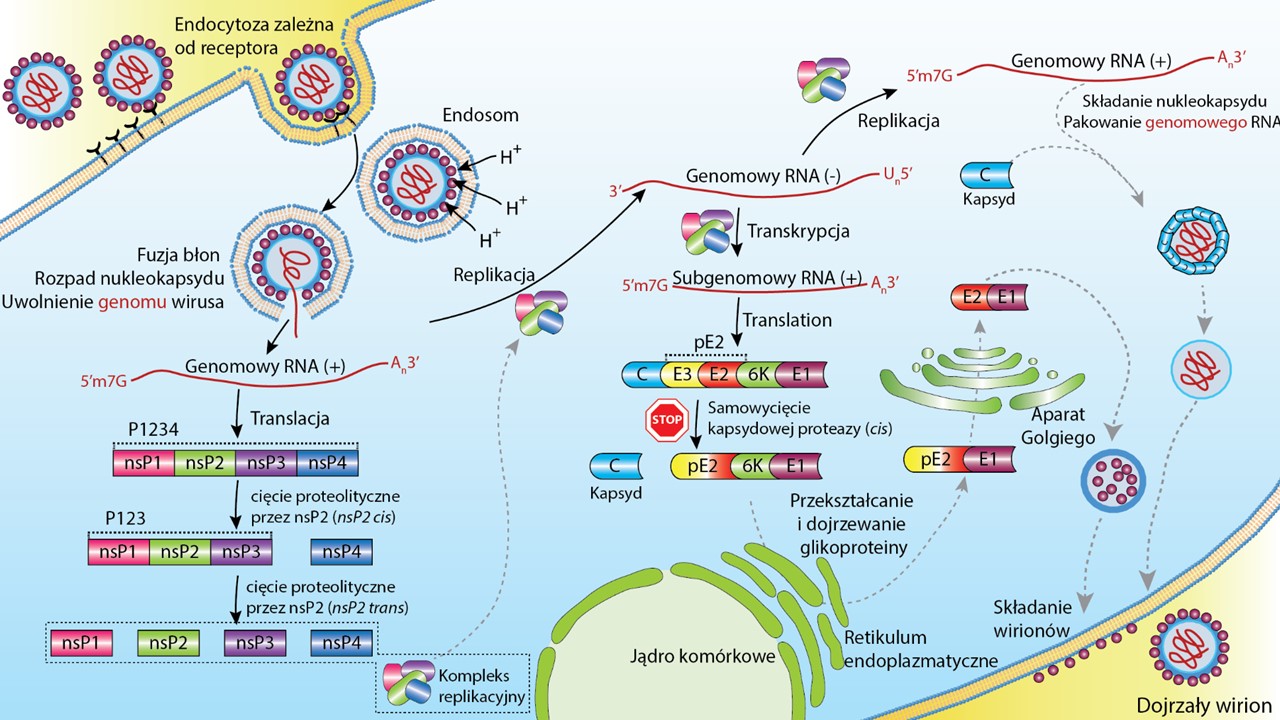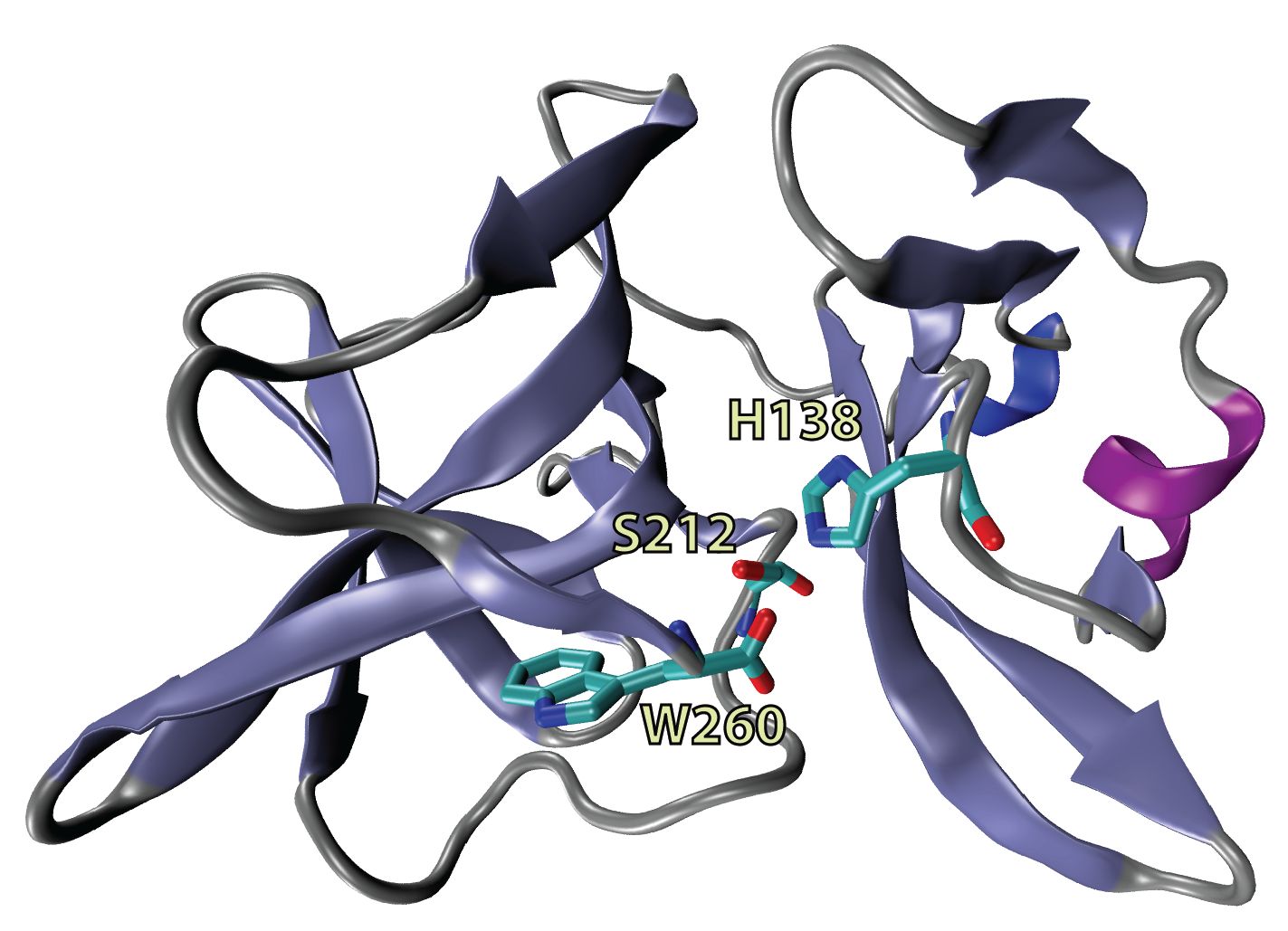YOUR BROWSER IS OUT-OF-DATE.
We have detected that you are using an outdated browser. Our service may not work properly for you. We recommend upgrading or switching to another browser.
Date: 18.12.2018 Category: science/research/innovation
What do we know about the O'nyong-nyong virus? Not much, as yet, but research conducted under the supervision of Marcin Sieńczyk, PhD from the Faculty of Chemistry will certainly shed new light on the biology of the virus. It will also allow designing compounds inhibiting its multiplication
 - This virus is practically unexplored. We have obtained our knowledge about it by analogy with other viruses belonging to the same family, i.e. togaviruses - says Marcin Sieńczyk, PhD, who received a grant from the National Science Centre - the institution that finances research on the O'nyong-nyong virus. – We’re dealing with this subject because there is a real threat of an epidemic, perhaps also in Europe, and we don’t have any medicine or vaccine at the moment - he adds.
- This virus is practically unexplored. We have obtained our knowledge about it by analogy with other viruses belonging to the same family, i.e. togaviruses - says Marcin Sieńczyk, PhD, who received a grant from the National Science Centre - the institution that finances research on the O'nyong-nyong virus. – We’re dealing with this subject because there is a real threat of an epidemic, perhaps also in Europe, and we don’t have any medicine or vaccine at the moment - he adds.
The researcher explains that the virus was first isolated in Uganda in 1959. It is transmitted by mosquitoes and is characterised by a high incidence rate. Its spread is very fast - 2-3 km per day. The biggest epidemic was recorded between 1959 and 1962 when more than 2 million people became infected. It was also the largest epidemic of arboviruses (viruses borne by arthropods, such as ticks and mosquitoes) recorded so far. The disease, which lasts for a few days and passes spontaneously, is treated only symptomatically.
Marcin Sieńczyk, PhD explains that viruses from Africa weren’t as dangerous for Europeans as they are today. Some of the causes of the emergence of new threats outside endemic areas for some viruses are the very developed tourism and the associated transmission of diseases between people. Local climate change is also an important factor. The natural geographic limits to certain viruses, such as mountain ranges, are no longer an insurmountable barrier for mosquitoes that carry them. The West Nile Virus, which is migrating farther and farther to the north of Europe, may serve as an example of this.
 The intended outcome of the research project is to design compounds that would inhibit the virus's ability to multiply and thus limit its infectious potential. It’s a multi-stage and complicated process, which was joined by partners from other scientific centres - biochemist Professor Adam Lesner from the University of Gdańsk and virologist Prof. Krzysztof Pyrć from the Jagiellonian University.
The intended outcome of the research project is to design compounds that would inhibit the virus's ability to multiply and thus limit its infectious potential. It’s a multi-stage and complicated process, which was joined by partners from other scientific centres - biochemist Professor Adam Lesner from the University of Gdańsk and virologist Prof. Krzysztof Pyrć from the Jagiellonian University.
In the first step, the researchers will focus on obtaining the viral enzyme. They must first obtain it under laboratory conditions and test its properties. The protein sequence is known, so different protein mutations can be created. Obtaining many variants of the enzyme is necessary because it still remains a mystery what forms of the enzyme will be most useful in further research.
This part of the project will be carried out in the Lesser Poland Biotechnology Centre. Then the substrate specificity of the protease will be determined, which will bring the researchers closer to looking into its "communication" with substrates. Additionally, it will make it possible to perform a preliminary insight into what chemical compounds it will potentially react with. This stage is the responsibility of the University of Gdańsk, namely the team of Professor Lesner, who has been involved in the technology of substrate mapping of enzymes for years.
 The next stage, carried out at Wrocław University of Science and Technology, will consist in the design and synthesis of specific relationships, as well as analysis of relations between their structure and activity. Molecular modelling methods and advanced computational tools will also be used.
The next stage, carried out at Wrocław University of Science and Technology, will consist in the design and synthesis of specific relationships, as well as analysis of relations between their structure and activity. Molecular modelling methods and advanced computational tools will also be used.
At the same time, biological research will be carried out using cells infected with the O'nyong-nyong virus. The party in charge of this stage of research is the Lesser Poland Biotechnology Centre headed by Professor Krzysztof Pyrć. This laboratory has not only all the tools to work with the most dangerous viruses, but also extensive experience in this area. There, the effect of compounds on virus replication in cells will be tested.
Although this is already outside the scope of the project, a few selected compounds have a chance to be included the in vivo research phase. Then the researchers will check the compounds’ toxicity levels, as well as look into how the animal reacts to them and what is their effectiveness.
Marcin Sieńczyk, PhD has received over 2 million PLN from NCN for the three-year project "O'nyong-nyong virus’s CP Protease: substrate profiling, design and synthesis of inhibitors and molecular probes with their biochemical analysis". - This amount will allow us to employ high-class specialists and carry out the highest standard research using modern equipment - says the project coordinator.
Our researchers have extensive experience in studying the chemical properties of viruses. They have already dealt with viruses such as hepatitis C (the compound obtained is ready for pre-clinical studies), the West Nile virus, herpes virus and recently the Zika virus.
Our site uses cookies. By continuing to browse the site you agree to our use of cookies in accordance with current browser settings. You can change at any time.